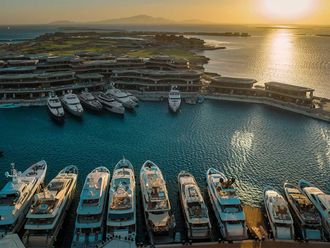
The refining industry is under pressure due to the decline in its profitability margins.
Margins are a function of delivered crude and products prices and operating costs and therefore are as volatile as these components.
Refineries historically have learned to live with often low margins or even negative ones. However, margins have demonstrated a cyclical behaviour.
When refining capacity is higher than demand, utilisation rates go down and margins with them. As demand picks up, the surplus is reduced, utilisation and margins improve which leads to new investment in capacity.
We all recall that one of the reasons for the appreciation of oil prices in 2004 and the following years was the tightness in refining capacity. Margins began to rise and investment in new capacity went ahead in many regions of the world.
Looking at BP's global indicator margin (GIM), which is a sort of weighted average of margins in the major refining centres, it was $9.92 per barrel in 2007.
But the financial and economic crisis of 2008 and the subsequent destruction of demand coupled with the coming on stream of new capacity led to a decline in margins to $4 a barrel in 2009.
Demand recovery
The recovery of demand in 2010 improved the margins to $4.4 a barrel, still low compared to what is called the "golden age" of refining a few years ago.
Of course margins are market and refinery specific and therefore the global average often hides the weakness in some markets.
For example, the margin in the Singapore market was $5.29 a barrel in 2007 and in 2010 was only $1.63.
Consultants KBC recently published their refining outlook which foresees global refining margins continuing under pressure in the medium term to 2015. In spite of recovering demand, a wave of new refining capacity is under construction and hence utilization will likely suffer as the new plants come on stream.
It is important to mention that margins are also affected by tightening product specifications which necessitated investment in additional processing units and higher operating costs.
There is no way to reverse this as environmental legislations are increasingly adopted by many countries. Even exporting countries that do not have such tight specifications locally are forced to produce according to market requirements in order to preserve and improve their market opportunities.
Consultants Hart estimate that world refining capacity may grow from 89 million barrels a day in 2009 to 102 million bpd in 2020.
Most additions are anticipated in Asia, the Middle East, Africa and Latin America while shutdowns are expected in North America, Europe and the Caribbean.
Brazil is planning to add 1.2 million bpd of refining capacity as it seeks to refine most of its own crude production.
China and India will continue to add capacity even by higher numbers. Refinery closure in Europe is anticipated to be over 2 million bpd and around 8 million bpd announced for sale since 2009.
In the US some small refineries may be closed while the larger plants add conversion or treating units.
In our region, Saudi Arabia is well underway to add 1.2 million bpd by new refineries in Yanbu, Jubail and Jeezan in addition to some expansion and modernisation of the existing refineries to meet higher products specification.
The UAE is planning a new refinery of 200,000 bpd in Fujairah and Qatar may revive its Shahin refinery project of similar capacity.
Kuwait is going ahead slowly with its Al Zour refinery of 615,000 bpd capacity. Iraq is planning four refineries of total capacity of 750,000 bpd but this programme is dependent on finding private investment partners, a difficult task to say the least.
Investing abroad
Some countries such as Saudi Arabia, Kuwait Qatar and Oman are also investing in refineries in foreign countries especially in Asia. While this trend is welcome to lock in markets for crude, competition with export oriented own local refineries must be considered.
In some countries, like ours, investment in refineries is not just a profit consideration. Factors such as security of products supplies, employment and job creation, technology transfer and a windfall of knowledge and skills to other industries are important in making decisions for new plants.
The writer is former head of Energy Studies Department in Opec Secretariat in Vienna.












